You will regret it if you don’t read this! How to create a beautiful garden with ground cover plants!

Must be complete
2024-11-29 11:03Ground cover plants refer to those dense, low-growing plants that can be used to replace lawns to cover the surface, prevent soil erosion, absorb dust, purify the air, reduce noise, eliminate pollution, and have certain ornamental and economic value through simple management.

Garden landscape design
- Flower beds and borders:
- Ground cover plants can be used as edge plants for flower beds and flower borders, playing the role of outlining and transition. For example, climbing ground cover plants such as ivy can be draped over the edge of the flower bed, contrasting with the flowers, adding a sense of layering and naturalness. In the flower border, herbaceous ground cover plants such as Ophiopogon japonicus can be planted in front of taller flowers, covering the exposed ground and making the entire flower border fuller and more beautiful.
- Understory Planting:
- Under the forest, due to insufficient light, many lawn grasses have difficulty growing well, but shade-tolerant ground cover plants can take advantage. Fern ground cover plants such as Nephrolepis and Pteris can thrive in the moist, dark environment under the forest, effectively covering the ground and preventing soil erosion, while creating a natural, quiet forest landscape. Dwarf shrub ground cover plants such as Fagus sylvatica are also suitable for planting under the forest, and their large and unique leaves can add richness to the understory landscape.
- Lawn Alternative Supplements:
- In some areas where lawn quality is not high or where traditional lawn grasses are not suitable, ground cover plants can be used as a substitute for lawns. For example, clover has a certain degree of trampling resistance and can improve soil through its own nitrogen fixation. It can replace lawns on both sides of park paths with less traffic or in recreational green spaces. At the same time, ground cover plants can also be planted in combination with lawns as a supplement to lawns. For example, small ground cover plants such as Viola yedoensis can be appropriately dotted in the lawn to add color to the lawn during its flowering season.
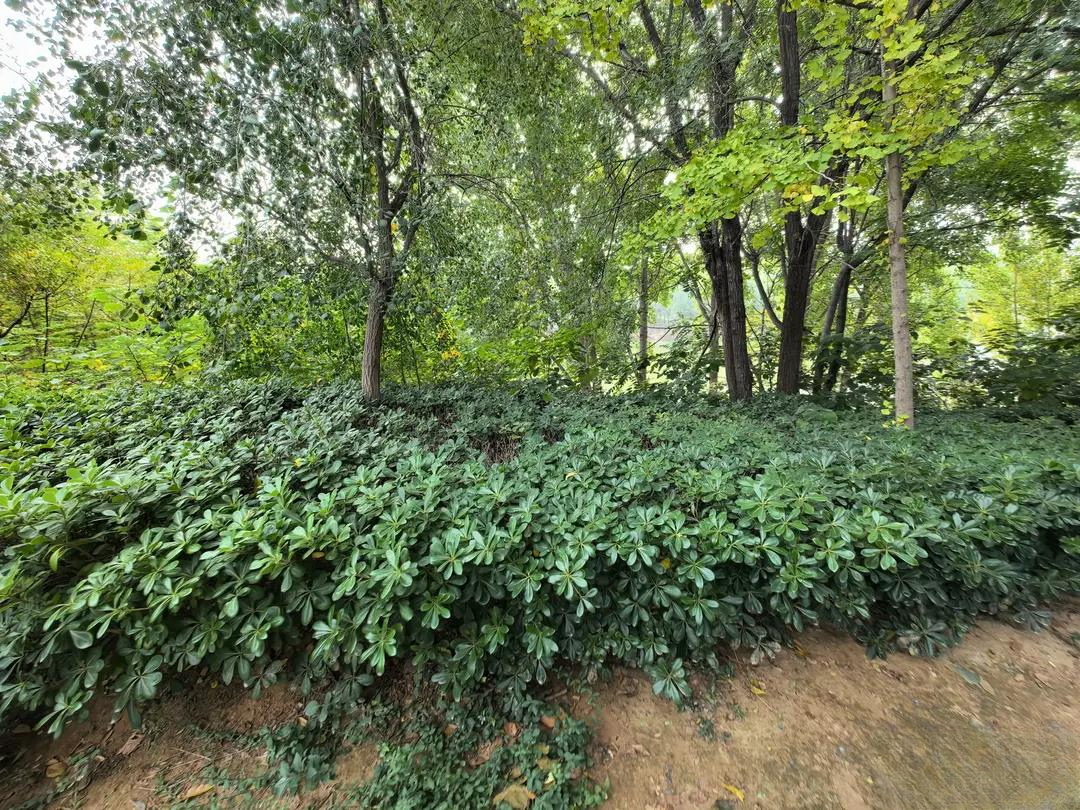
Ecological restoration
- Soil and Water Conservation:
- The roots of ground cover plants can stabilize the soil, reduce the erosion of soil by rainwater, and prevent soil erosion. In places prone to soil erosion, such as hillsides and river banks, it is very effective to plant creeping shrub ground cover plants such as sand juniper or grass ground cover plants with well-developed root systems such as bermudagrass. For example, planting ground cover plants on the slopes of highways can cover the slopes in a short period of time, stabilize the slope soil, and prevent landslides and mudslides.
- Environmental Improvement
- Ground cover plants can absorb harmful gases in the air, such as carbon dioxide and sulfur dioxide, and release oxygen. At the same time, some aquatic ground cover plants can also absorb pollutants in the water and purify the water quality. For example, wetland ground cover plants such as reeds can absorb nutrients such as nitrogen and phosphorus in the water, which is of great significance to improving the wetland ecological environment and preventing eutrophication of water bodies.
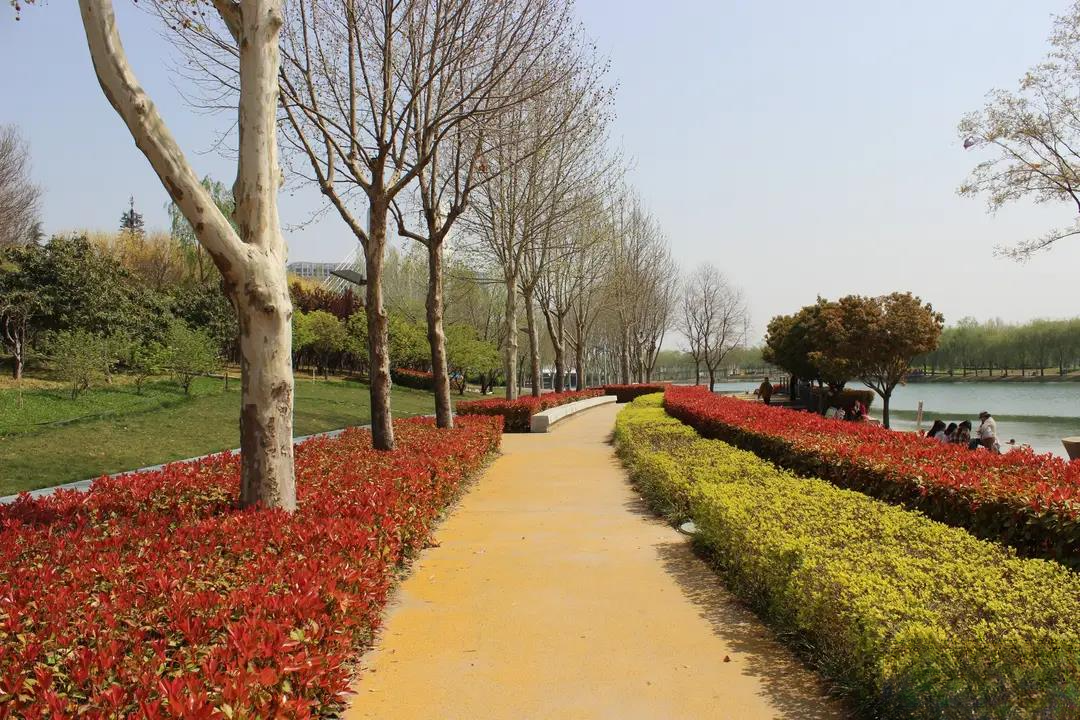
Urban greening
- Road greening:
- Planting ground cover plants in the dividing strips of urban roads and the edges of sidewalks can beautify the environment and reduce dust. For example, planting evergreen grass ground cover plants such as Ophiopogon japonicus under trees on both sides of the road can not only cover the exposed soil in the tree pond, but also absorb vehicle exhaust and road dust to a certain extent. Climbing ground cover plants such as Parthenocissus quinquefolia can climb on the walls on both sides of the road or on the piers of overpasses, playing the role of vertical greening and increasing the green space in the city.
- Greening of residential areas:
- In residential areas, ground cover plants can be planted in front of and behind buildings, along garden paths, etc. Dwarf shrub ground cover plants such as winter jasmine can be planted in the corners of buildings, bringing residents beauty when they bloom in spring. In the green space of the community, ground cover plants can be planted in combination with flowers and trees to create a comfortable and pleasant living environment.
- Green roof:
- Some ground cover plants with strong adaptability can be used for roof greening. For example, Sedum sedum is drought-resistant, cold-resistant, and barren-resistant, and has a shallow root system that will not damage the roof structure. Planting ground cover plants such as Sedum sedum on the roof can reduce roof temperature, reduce roof water accumulation, extend the service life of the roof waterproof layer, and at the same time add green landscape to the city.
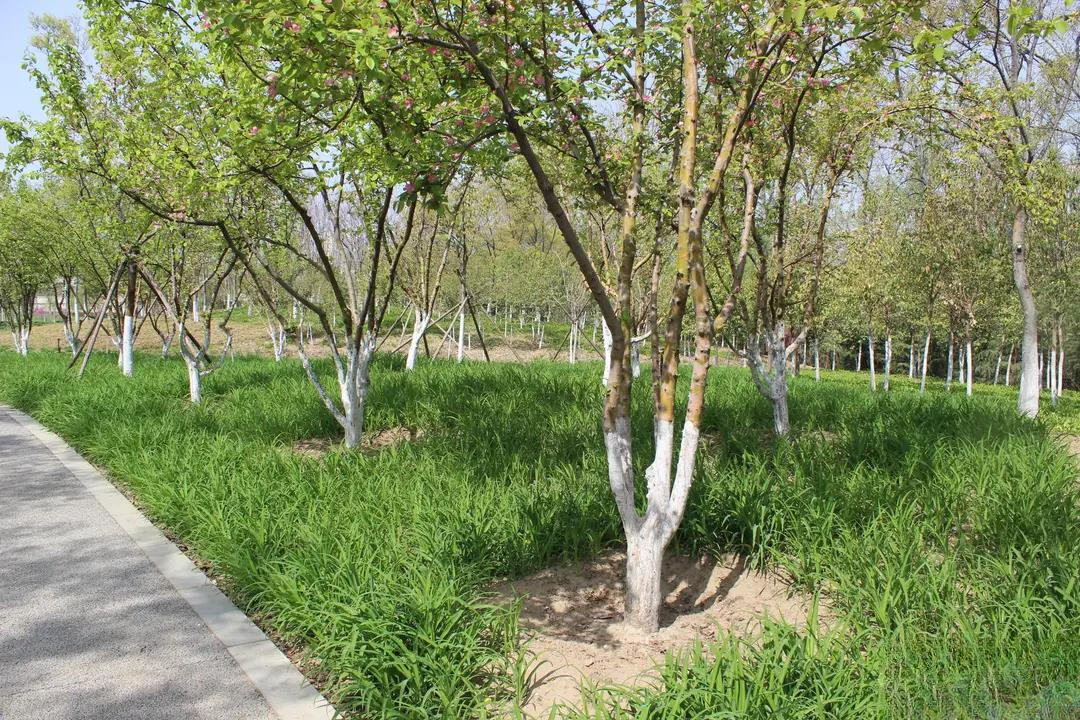
Grass ground cover:
- Ophiopogon japonicus: a perennial evergreen herb of the genus Ophiopogonis in the family Liliaceae. The top or middle of the root swells into a spindle-shaped fleshy tuber with a slender root neck. The leaves grow in clusters at the base and are 10-30 cm long. The flowering period is from May to September. The flowers are racemes, the flowers are lavender, and the fruits are blue. Ophiopogon japonicus is evergreen all year round, has a wide adaptability, strong stress resistance, rich seed sources, easy to reproduce, strong shade tolerance, and the leaves are more shiny when grown in shade and wet places. Its tubers are commonly used in traditional Chinese medicine and have certain economic value.
- Clover: Belongs to the genus Trifolium in the Fabaceae family, and includes white clover, red clover, strawberry clover and other species. Their common feature is that the leaves are palmately trifoliate, consisting of three sessile leaflets, clustered at the top of the petiole. White clover prefers warm and humid climates, and is more resistant to cold, frost, heat and drought than red clover, and can tolerate shade and humidity; red clover is most suitable in areas where the summer is not too hot and the winter is not too cold, and has strong shade and humidity tolerance; strawberry clover has strong resistance to flooding, and is more resistant to damp, dry or alkaline soil environments with high salt content than white clover.
- February orchid: Also known as Zhugecai, it has blue-purple flowers and blooms from March to May. It has strong adaptability to the environment and is a common early spring ground cover plant in northern China. It is widely planted under forests, wastelands, parks, etc. and has high ornamental value.
- Viola yedoensis: Flowers bloom in March and April, with lavender flowers. The plant is low, with leaves growing in clusters and covering the ground. The seeds can reproduce by self-sowing, and can be used for ground cover greening in flower beds, flower border edges or under forests.
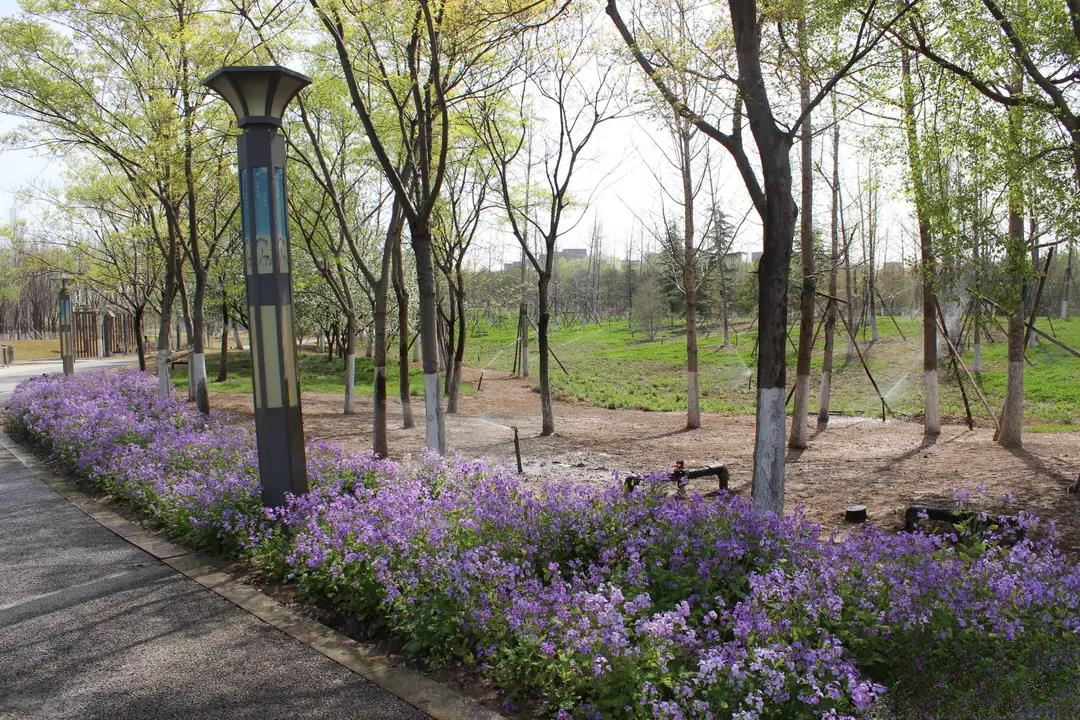
Rattan Quilt:
- Ivy: An evergreen vine plant, it can survive the winter in the open field after 3-5 years of maintenance in northern microclimates such as Beijing. It has aerial roots on its stems that can cling to walls, tree trunks and other objects. It has beautiful leaves and emerald green color, making it an excellent vertical greening ground cover plant.
- Euonymus fortunei: An evergreen vine plant that creeps low and often grows roots on branches. The leaves are oval to elliptical, with a dark green surface. It has strong adaptability and stress resistance, and can be used for forest ground cover, slope protection, etc.
- Five-leaf ivy: a deciduous vine plant with strong adaptability, cold and heat resistance, tolerance to barrenness, drought, shade, and strong resistance. Its leaves turn red in autumn. It can be used for vertical greening of walls, rockery, rocks, etc., and can also be planted as a ground cover plant at the edge of the forest, on slopes, etc.
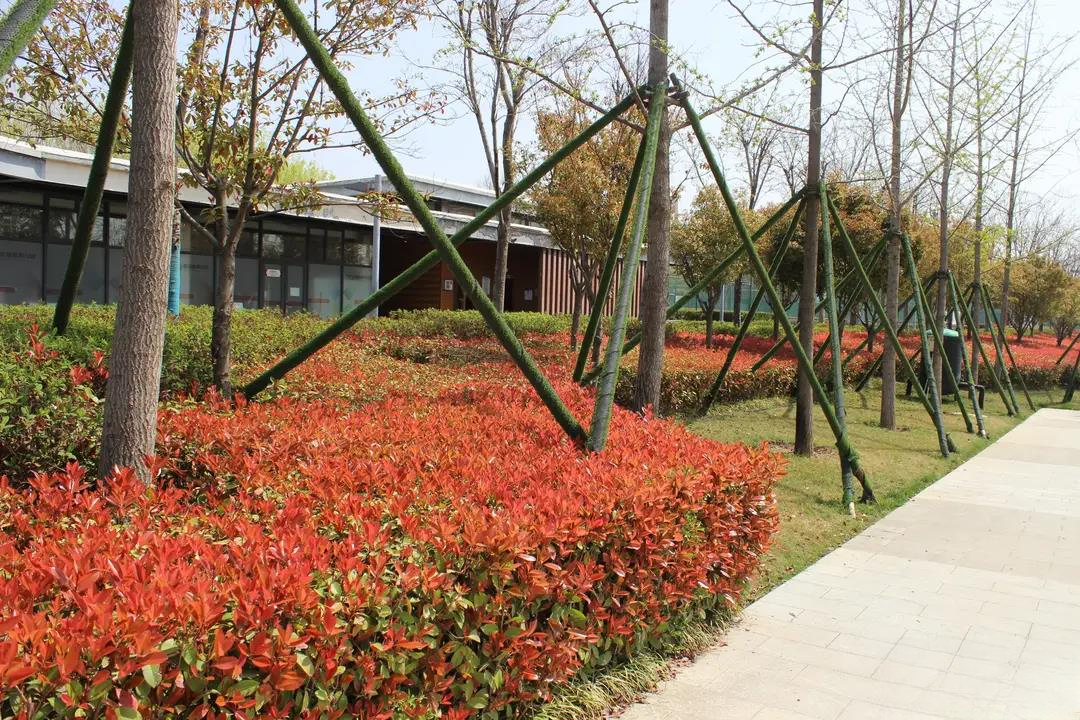
Fern Ground Cover:
- Nephrolepis: A common fern ground cover plant, it likes warm and humid environments, has strong shade tolerance, and is suitable for growing in humid environments such as under forests and by streams. Its leaves are beautifully shaped and can increase the natural atmosphere of the garden landscape.
- Pteris fern: The plant is small and has beautiful leaves, like a phoenix tail, which has high ornamental value. Pteris fern likes shade and humidity, and has low requirements for soil. It is a good material for understory cover in gardens and green spaces.
- Shrub ground cover:
- Sand juniper: A creeping shrub with strong drought tolerance, it can be used at the edge of a forest, next to rocks, or as a slope protection ground cover, or it can be placed on the edge of a lawn.
- Winter jasmine: The branches are slender and arched, and they bloom in early spring. The flowers are golden yellow and are important ornamental flowers in early spring. Winter jasmine is highly adaptable and resistant to pruning. It can be planted as a ground cover plant on the edge of a flower bed or on a slope.
- Fatsia stellata: The leaves are large and unique in shape, split like a palm, and the leaves are dark green, with high ornamental value. Fatsia stellata prefers a humid environment and is suitable for planting under forests. It is a common ground cover plant under forests.
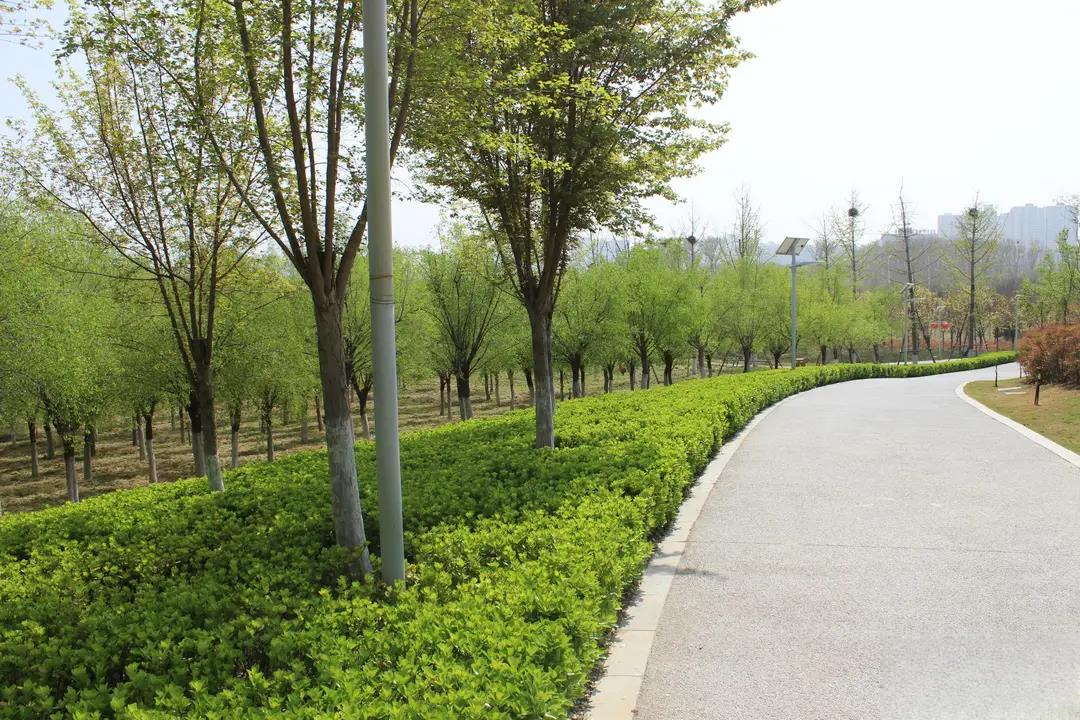
High-Low Match
- Arbor-ground cover plants: This combination can make full use of space and create a landscape with distinct layers. For example, plant Ophiopogon japonicus under a tall ginkgo tree. The ginkgo tree is tall, with spreading branches and leaves, and golden leaves in autumn, which are of great ornamental value. Ophiopogon japonicus is evergreen all year round and has a short plant, which can cover the ground under the tree well. Ophiopogon japonicus does not need too much sunlight during its growth process, and it just adapts to the shaded environment under the ginkgo tree. The combination of the two complements each other, highlighting the dominant position of the arbor and enriching the ground landscape.
- Shrubs - ground cover plants: Take crape myrtle as an example. Crape myrtle blooms in summer with bright colors. Plant petunias as ground cover plants around crape myrtle bushes. Petunias are low-growing plants with lush flowers and rich colors. They can spread and grow along the base of crape myrtle. When crape myrtle blooms, petunias can also bloom at the same time, forming a staggered flower border, extending the viewing period and making the landscape more colorful.
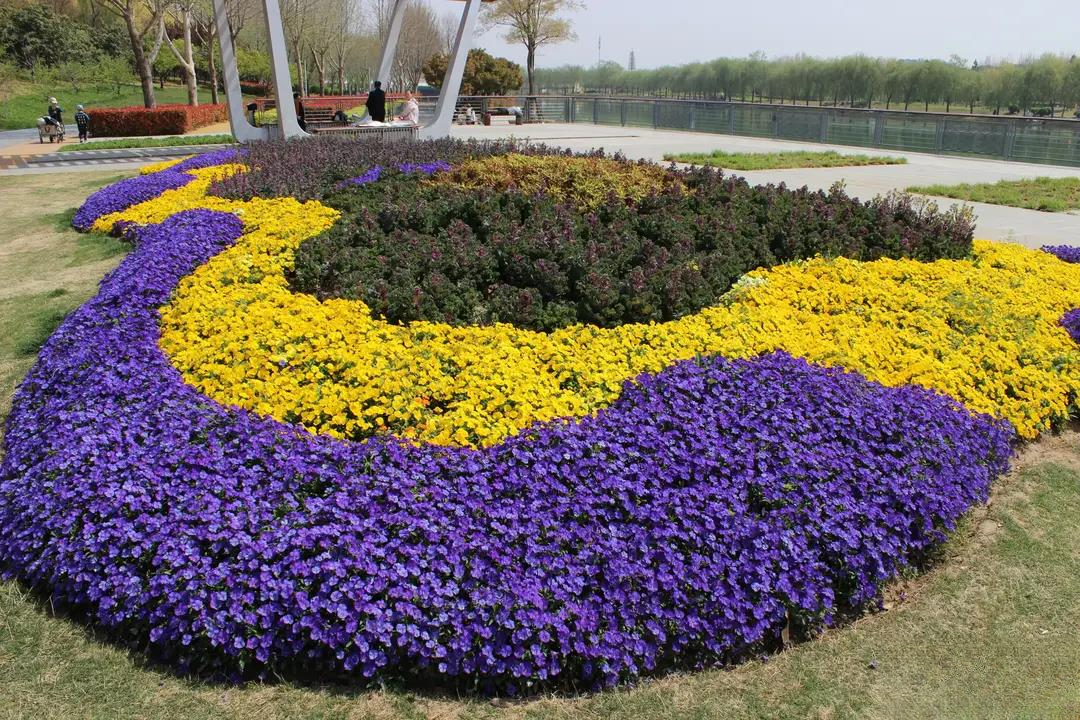
Color Matching
- Color contrast: For example, planting Loropetalum rubra on the edge of a green lawn (such as a Bermuda grass lawn). The Bermuda grass is green, while the leaves and flowers of Loropetalum rubra are purple-red, with a sharp contrast in color. This strong color contrast can attract people's attention, increase the visual impact of the landscape, and make the entire landscape more vivid.
- Adjacent color matching: Choosing ground cover plants with similar colors can create a harmonious and unified atmosphere. For example, planting yellow golden leafed lily and yellow-green golden-edged broad-leaved ophiopogon together. Their colors blend with each other and transition naturally, appearing particularly fresh and elegant in the sun, giving people a soft and comfortable visual experience.
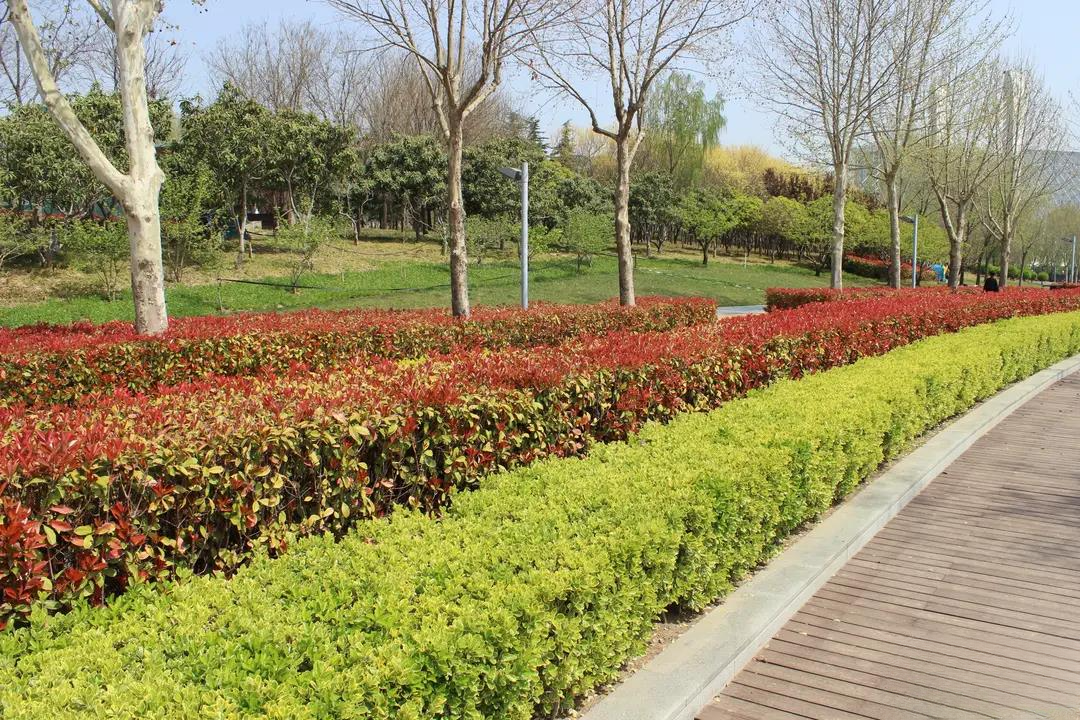
Flowering season matching
- Combining different flowering periods: For example, pairing early spring orchids with late spring irises. Orchids bloom in March and April, with lavender flowers, opening first and adding a touch of color to the spring landscape. Iris blooms in April and May, with beautiful shapes and a variety of colors. When the orchid season ends, irises begin to bloom, ensuring that flowers bloom for a longer period of time in the spring, keeping the landscape colorful and vibrant.
- Combining long and short flowering periods: For example, you can combine begonias, which have a long flowering period, with tulips, which bloom once but have bright flowers. Begonias can continue to bloom for a long time, providing a continuous color background for the landscape. When tulips bloom in spring, they become the focus of the landscape with their bright colors and unique flower forms. After the tulips end their flowering period, begonias can still maintain the ornamental value of the landscape.
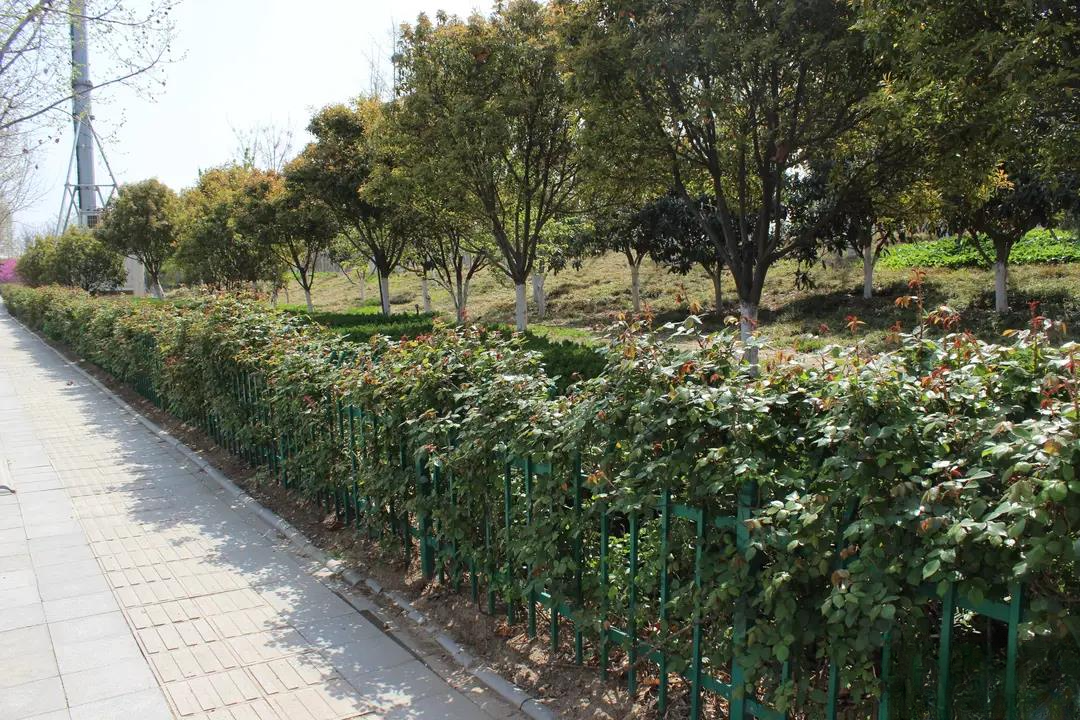
Texture Matching
- Different textures: Take the rough-leafed golden twig and the delicate-leafed ophiopogon as an example. The leaves of golden twig are large and thick, with a rough texture, and have a strong visual presence. The leaves of ophiopogon are slender, with a soft and delicate texture. Planting them together, the rough golden twig can serve as the center or background of the landscape, while the delicate ophiopogon can serve as a foil and buffer, making the entire landscape more rich and diverse in texture.
- Leaf shape matching: Pair the rounded leaves of pennywort with the pinnately split leaves of fern ground cover plants (such as kidney fern). The rounded leaves of pennywort are round and lovely, while the pinnate leaves of kidney fern are more delicate and complex. The two different leaf shapes interweave to form an interesting pattern, adding natural beauty and interest to the landscape.